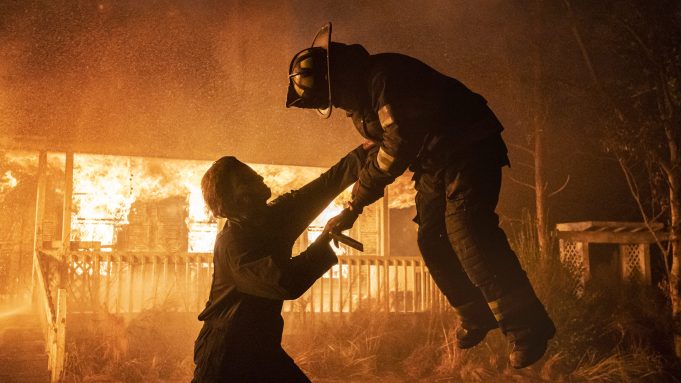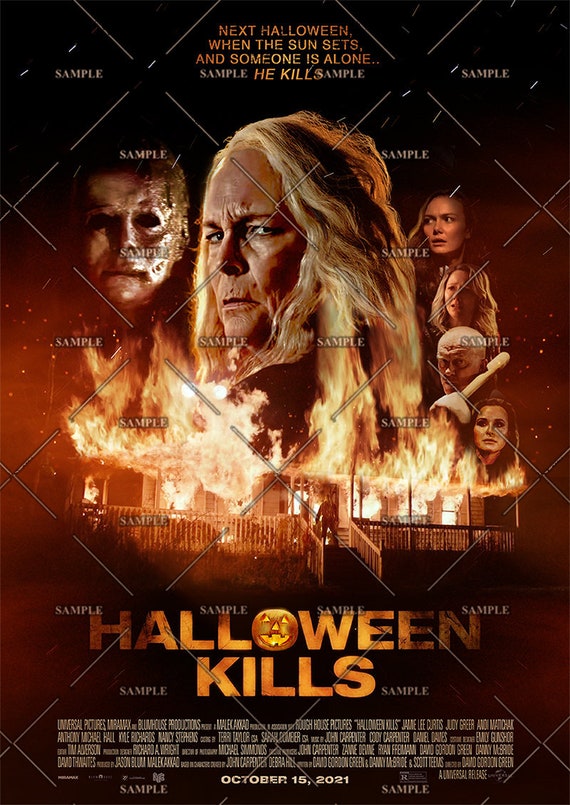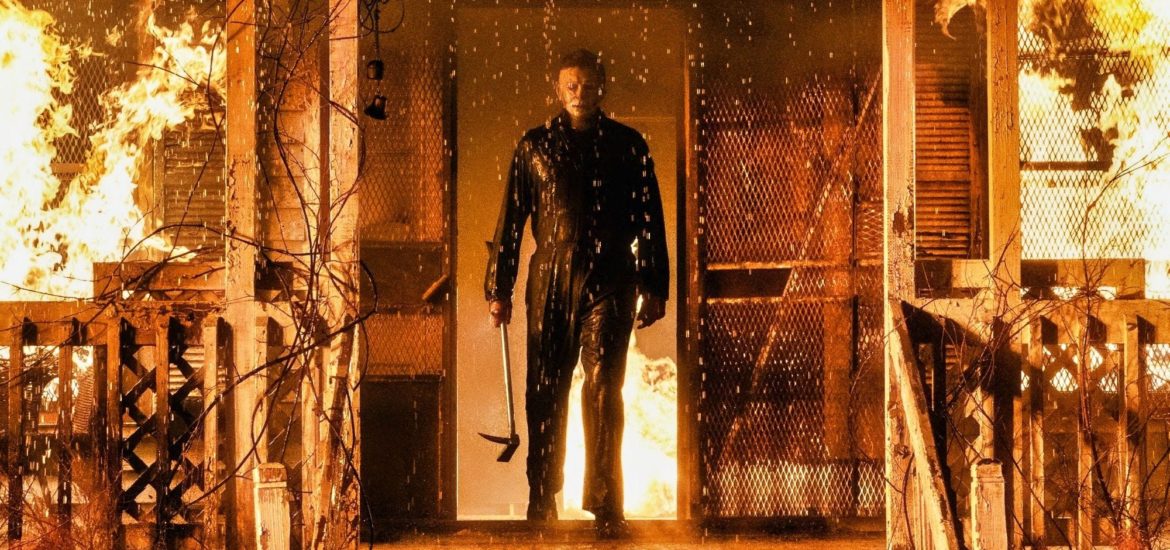Contains Potential Spoilers
The long awaited second installment of the Laurie Strode/Michael Myers three-part Blumhouse saga opened this weekend. While many have and will see it in the theater, those that are still concerned about viral exposure can watch it streaming on the Peacock Network with no worries of theater priced concessions.
Seems the only thing that can stop the boogey man was a global pandemic, pushing the release date back to this year and weekend. Disappointing fans expecting to get the answers to many questions left in the 2018 film.
Now the question is did it live up to the hype and expectations depending on levels of fandom and passion. You can check IMDB, Rotten Tomatoes and YouTube for all levels and length of feedback, reaction and commentary. Halloween Kills picks up exactly where the last ended, as a part two of that nights events and murders. Myers is left to burn and die trapped in Strode’s basement while Strode and family escape wounded to the hospital.
One of the biggest questions since release is, how does Myers escape the blazing inferno?
 Halloween Kills is both direct sequel and flashback to the original, telling the re-imagined narrative, rewritten history of the night in 1978 when The Shape attacked Strode under the timeline of the other movies never existing and no sibling connection between them. Early in the film, we see new ‘vintage’ footage of the situation playing out instead of the original events of Part II. Thus, the sight and voice of ‘Dr. Loomis’ is sure to make long-time fans giddy and maybe even forget, the ‘other’ doctor.
Halloween Kills is both direct sequel and flashback to the original, telling the re-imagined narrative, rewritten history of the night in 1978 when The Shape attacked Strode under the timeline of the other movies never existing and no sibling connection between them. Early in the film, we see new ‘vintage’ footage of the situation playing out instead of the original events of Part II. Thus, the sight and voice of ‘Dr. Loomis’ is sure to make long-time fans giddy and maybe even forget, the ‘other’ doctor.
We’re reintroduced to Tommy Doyle (Anthony Michael Hall) and Lindsey (Kyle Richards) who originally played her as adults along with the return of some of the original staff members.
The brutality begins early (probably as expected) in the smoldering basement inferno as firefighters combat the blaze with exterior first responders unfortunately meeting Myers outside the house. The sequence is visually impressive and stylistic along with the following bloodshed.
Re-imagined history repeats with Strode and family going to Haddonfield Memorial wounded, thinking Myers is ashes.
A few vintage scenes are partially recreated including a tribute of sorts to a scene from Part II. At one point there’s even a nod to Season of the Witch.
Early kills, as most, are brutal, merciless and gory, though one in particular gets downright Nick Gage style hardcore and another feels prolonged and downright mean-spirited. The body count is high but probably not high enough for some.
The movie socially addresses vigilante justice akin to Part IV though to a much greater and realistic modern-day sense, showing the mental, emotional psychological effects of mob rules mentality and acting/reacting to false and misleading information with force, subliminally mirroring current events.
Ben Tramer, who should be alive in this timeline, gets a mention in the hospital as they continue foreshadowing Myers arrival.
Like the 2018 return Myers face is never fully shown, except in distanced shots though blood, burns and damage are shown at angles during the mob scene.
 The shape already walks and breathes into Halloween Kills badly burned, two bullet wounds and a hand half blown off. Physically he’s a man in his ‘60s but the mortal argument can’t be used anymore given the inhuman amounts of punishment taken to this point. Though there’s still the supernatural aspect/argument or the power of the evil inside him fueling his body to withstand inhuman amounts of pain and punishment and keep going, especially after the damage done by the mob. There’s also an argument to be made that killing fuels and regenerates him and whatever others forces exist inside.
The shape already walks and breathes into Halloween Kills badly burned, two bullet wounds and a hand half blown off. Physically he’s a man in his ‘60s but the mortal argument can’t be used anymore given the inhuman amounts of punishment taken to this point. Though there’s still the supernatural aspect/argument or the power of the evil inside him fueling his body to withstand inhuman amounts of pain and punishment and keep going, especially after the damage done by the mob. There’s also an argument to be made that killing fuels and regenerates him and whatever others forces exist inside.
The essence of evil Strode says in narration near the end, climaxing in the movies last ‘major kill.’
The enjoyment in Halloween Kills is your ability to suspend belief in whatever Michael Myers is, on the inside.
The film also challenges the mythology and long held belief that Myers’ single motivation was to stalk and finish off Strode, injecting alternative ideas like a hypodermic needle to the eye. It also has the continuing vibe of a graphic drama or true crime vehicle rather than horror slasher and feels realistic in the sense of potential, authentic townspeople reaction if the situation really happened.
Regardless of reaction and opinion in print, online or YouTube, Halloween Kills is finally here. Hopefully a year from now, with no extensions, we’ll find out how it ends.





